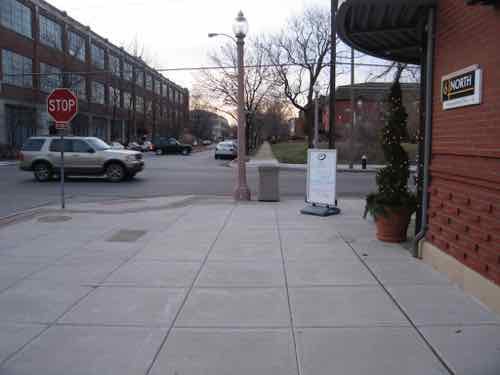Looking Back on 14 Years of Blogging, Starting the 15th Year
Here we are at another blog anniversary, the completion of 14 years and the start of the 15th year. I was 37 when my dad had a heart attack on October 1, 2004. I needed a mental distraction. I began blogging in the year it entered the mainstream:
In 2004, the role of blogs became increasingly mainstream, as political consultants, news services and candidates began using them as tools for outreach and opinion forming. Even politicians not actively campaigning, such as the UK’s Labour Party’s MP Tom Watson, began to blog to bond with constituents.
Minnesota Public Radio broadcast a program by Christopher Lydon and Matt Stoller called “The blogging of the President,” which covered a transformation in politics that blogging seemed to presage. The Columbia Journalism Review began regular coverage of blogs and blogging. Anthologies of blog pieces reached print, and blogging personalities began appearing on radio and television. In the summer of 2004, both United States Democratic and Republican Parties’ conventions credentialed bloggers, and blogs became a standard part of the publicity arsenal. Mainstream television programs, such as Chris Matthews’ Hardball, formed their own blogs. Merriam-Webster’s Dictionary declared “blog” as the word of the year in 2004.[19]
Blogs were among the driving forces behind the “Rathergate” scandal, to wit: (television journalist) Dan Rather presented documents (on the CBS show 60 Minutes) that conflicted with accepted accounts of President Bush’s military service record. Bloggers declared the documents to be forgeries and presented evidence and arguments in support of that view, and CBS apologized for what it said were inadequate reporting techniques (see Little Green Footballs). Many bloggers view this scandal as the advent of blogs’ acceptance by the mass media, both as a news source and opinion and as means of applying political pressure.
Some bloggers have moved over to other media. The following bloggers (and others) have appeared on radio and television: Duncan Black (known widely by his pseudonym, Atrios), Glenn Reynolds (Instapundit), Markos Moulitsas Zúniga (Daily Kos), Alex Steffen (Worldchanging) and Ana Marie Cox(Wonkette). In counterpoint, Hugh Hewitt exemplifies a mass media personality who has moved in the other direction, adding to his reach in “old media” by being an influential blogger. Music blog publisher Jeff Davidson, Earvolution.com, now produces Sun Studio Sessions airing on PBS stations across the U.S.
Some blogs were an important news source during the December 2004 Tsunami such as Médecins Sans Frontières, which used SMS text messaging to report from affected areas in Sri Lanka and Southern India. Similarly, during Hurricane Katrina in August 2005 and the aftermath a few blogs which were located in New Orleans, including the Interdictor and Gulfsails were able to maintain power and an Internet connection and disseminate information that was not covered by the mainstream media. (Wikipedia)
In the early years I wasn’t taken seriously, I recall planner Rollin Stanley, dismissively telling me he doesn’t read blogs. A few years after he left St. Louis he emailed me asking me to check out his work blog!
This blog peaked in popularity in 2006. St. Louis magazine named me the 50th most powerful person in St. Louis in their December 2006 issue. That month I met a young man named Alex Ihnen. I attended at 2-day event downtown on “accessible streets” reviewing ADA/accessibility issues — I wasn’t yet disabled. After the 2nd day, December 15th, I agreed to meet Alex at 6 North Cafe to discuss blogging. At this point I only had a little over 2 years of experience, though in January 2006 I switched to WordPress 2.0 on my own leased server space.

Alex went on to do great things here with UrbanSTL, and later with NextSTL, before moving to Cincinnati. My only time in Cincinnati was at a Streetsblog event, also attended by Alex prior to his move.
In the recent non-scientific Sunday Poll most indicated they found value in local blogs:
Q: Agree or disagree: Local blogs, including this one, provide insights not gained via mainstream media.
- Strongly agree: 10 [43.48%]
- Agree: 9 [39.13%]
- Somewhat agree: 2 [8.7%]
- Neither agree or disagree: 1 [4.35%]
- Somewhat disagree: 1 [4.35%]
- Disagree: 0 [0%]
- Strongly disagree: 0 [0%]
- Unsure/No Answer: 0 [0%]
I still enjoy sharing my thoughts. There’s no shortage of material to write about. Occasionally I get some little things accomplished, like getting an obstacle removed from the 6th Street sidewalk earlier this year, see: Sidewalk Obstruction Removed After Annoying Pedestrians For 7+ Years. I can easily see reaching the 15 year mark — only one more year.
Not sure if 20 will be reached.
— Steve Patterson
